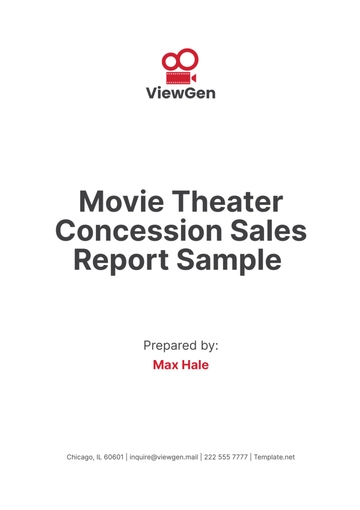Free Department Store Sales Report

I. Executive Summary
During the reporting period, [Your Company Name] observed diverse sales performance across various product categories. One of the most significant trends was the rise in online sales, which grew by 15% compared to the previous quarter, reflecting changing consumer preferences and the growing impact of e-commerce. This shift compensated for a 7% decline in in-store purchases, as foot traffic in physical locations continued to face challenges. Despite these changes, total revenue for the quarter remained stable, driven largely by increased investment in digital marketing and optimized online user experiences.
The fashion and electronics sectors emerged as standout performers, contributing significantly to overall sales. Fashion saw a 12% increase in sales, fueled by demand for seasonal collections and promotional campaigns. Electronics, buoyed by the latest product releases, recorded a 10% sales growth. On the other hand, home goods and beauty products experienced moderate declines, with sales dipping by 4% and 3%, respectively. Overall, [Your Company Name] is well-positioned to capitalize on the shift toward e-commerce, while opportunities remain to revitalize the in-store experience and adjust inventory for underperforming categories. Moving forward, the company plans to continue strengthening its omnichannel approach to sustain growth and adapt to evolving market conditions.
II. Sales Performance Overview
1. Total Sales
The total sales for the department store were $10.5 million. This represents a 5% increase from the previous period. The growth was primarily driven by promotional activities and increased online shopping.
Quarter | Total Sales ($Million) | Percentage Change |
|---|---|---|
Q1 | 2.5 | 2% |
Q2 | 2.7 | 8% |
Q3 | 2.6 | 0.5% |
Q4 | 2.7 | 9% |
2. Online vs. In-Store Sales
Online sales contributed to 40% of the total sales, while in-store sales contributed to 60%. The trend shows a gradual increase in online shopping, fostering a more balanced sales channel distribution.
Online Sales | In-Store Sales |
|---|---|
40% of total sales | 60% of total sales |
III. Category Sales Performance
1. Fashion
The fashion category recorded impressive growth, with sales rising by 12%, making it the top-performing segment for [Your Company Name]. This surge can be attributed to the successful introduction of new seasonal collections that resonated well with current trends and customer preferences. In addition to fresh inventory, strategic promotions, including limited-time discounts and exclusive member offers, effectively attracted both returning and new customers. Online sales were particularly strong in this category, aided by social media marketing campaigns and influencer partnerships that heightened brand visibility and product desirability.
2. Electronics
Electronics sales saw a notable increase of 7%, driven by the strong performance of consumer electronics and home appliances. The launch of new products, such as the latest smartphones and smart home devices, sparked high demand and contributed significantly to the category’s growth. Seasonal campaigns, including holiday and back-to-school promotions, were also instrumental in boosting sales, particularly in key sub-categories like laptops and entertainment systems. The strategic timing of product releases and promotional efforts helped maximize revenue in this competitive segment.
3. Home and Living
The home and living category experienced a slight decrease of 2%, which can be attributed to reduced in-store foot traffic and a shift in consumer spending priorities. While demand for larger home furnishings and décor items softened, some subcategories like kitchen appliances and home organization products showed resilience. The shift towards e-commerce in other categories may also explain the slower in-store sales. [Your Company Name] will need to focus on targeted promotions and expanding its online presence to counteract this trend and reinvigorate interest in home and living products.
4. Other Categories
Sales in other categories, such as toys and books, remained relatively stable, with minimal fluctuations compared to the previous period. Although no significant growth was observed, these categories maintained steady performance, reflecting consistent demand from core customer groups. With moderate investment in promotions and inventory management, [Your Company Name] successfully sustained sales levels in these segments. As these categories typically see surges during holiday seasons, additional opportunities for growth are anticipated in upcoming quarters.
IV. Regional Sales Analysis
1. Region A
Region A experienced a robust sales growth of 10%, marking it as a key contributor to overall performance. This increase can be attributed to a combination of strategic marketing efforts and significant improvements in store layouts, which enhanced the shopping experience. Targeted advertising campaigns focusing on high-demand products, along with seasonal promotions, helped draw more foot traffic to physical stores. Additionally, the redesigned store layouts improved product visibility and accessibility, encouraging impulse purchases and higher customer satisfaction. These factors collectively led to increased customer engagement, contributing to a strong sales performance in the region.
2. Region B
Sales in Region B remained stable, posting a modest 1% increase during the reporting period. While growth was not as pronounced as in other regions, customer loyalty programs played a crucial role in maintaining steady performance. Through personalized rewards, exclusive discounts, and enhanced customer service, [Your Company Name] was able to foster brand loyalty and encourage repeat purchases. The region’s performance reflects the effectiveness of these programs in retaining existing customers despite a relatively saturated market. Looking ahead, there are opportunities to further build on this foundation by introducing additional incentives and expanding digital marketing initiatives to reach new audiences.
3. Region C
Region C experienced a 3% decline in sales, driven by a combination of challenging economic conditions and increased competition from other retailers. Local economic slowdowns led to decreased consumer spending, particularly in non-essential categories. Furthermore, aggressive promotional strategies by competitors in the area intensified the competitive landscape, drawing away potential customers. To counter this, [Your Company Name] will need to explore localized marketing strategies, such as offering competitive pricing, introducing region-specific products, and enhancing in-store customer experiences. These steps could help mitigate the current downturn and stabilize future sales in Region C.
V. Conclusion
[Your Company Name] has made significant strategic improvements in its operations and marketing efforts, leading to a positive influence on overall sales during the reporting period. The company's focus on enhancing online infrastructure has resulted in a substantial increase in e-commerce transactions, validating the effectiveness of investing in digital platforms. Marketing campaigns tailored to online audiences have successfully expanded our customer base and boosted brand visibility. These efforts have not only driven sales but have also improved customer satisfaction through a more seamless and engaging online experience.
Despite these advancements, ongoing challenges in specific sectors and regions require prompt attention to achieve consistent growth in the future. Certain product categories have underperformed, and some geographic areas have not met sales expectations due to factors such as market saturation or shifting consumer preferences. It is recommended that [Your Company Name] continues to invest in online infrastructure and further enhances customer experience by integrating advanced technologies like personalized recommendations and efficient customer service channels. Additionally, developing targeted strategies to address underperforming sectors—such as tailored promotions or product line adjustments—and conducting market analyses in lagging regions can help mitigate these challenges. By focusing on these areas, [Your Company Name] is well-positioned to strengthen its market presence and drive sustained growth moving forward.
- 100% Customizable, free editor
- Access 1 Million+ Templates, photo’s & graphics
- Download or share as a template
- Click and replace photos, graphics, text, backgrounds
- Resize, crop, AI write & more
- Access advanced editor
Streamline your sales tracking with Template.net’s Department Store Sales Report Template. This customizable and editable template helps you analyze sales data efficiently. Fully editable in our Ai Editor Tool, you can easily adjust the layout and metrics to meet your business needs, ensuring accurate and insightful reporting for your department store.
You may also like
- Sales Report
- Daily Report
- Project Report
- Business Report
- Weekly Report
- Incident Report
- Annual Report
- Report Layout
- Report Design
- Progress Report
- Marketing Report
- Company Report
- Monthly Report
- Audit Report
- Status Report
- School Report
- Reports Hr
- Management Report
- Project Status Report
- Handover Report
- Health And Safety Report
- Restaurant Report
- Construction Report
- Research Report
- Evaluation Report
- Investigation Report
- Employee Report
- Advertising Report
- Weekly Status Report
- Project Management Report
- Finance Report
- Service Report
- Technical Report
- Meeting Report
- Quarterly Report
- Inspection Report
- Medical Report
- Test Report
- Summary Report
- Inventory Report
- Valuation Report
- Operations Report
- Payroll Report
- Training Report
- Job Report
- Case Report
- Performance Report
- Board Report
- Internal Audit Report
- Student Report
- Monthly Management Report
- Small Business Report
- Accident Report
- Call Center Report
- Activity Report
- IT and Software Report
- Internship Report
- Visit Report
- Product Report
- Book Report
- Property Report
- Recruitment Report
- University Report
- Event Report
- SEO Report
- Conference Report
- Narrative Report
- Nursing Home Report
- Preschool Report
- Call Report
- Customer Report
- Employee Incident Report
- Accomplishment Report
- Social Media Report
- Work From Home Report
- Security Report
- Damage Report
- Quality Report
- Internal Report
- Nurse Report
- Real Estate Report
- Hotel Report
- Equipment Report
- Credit Report
- Field Report
- Non Profit Report
- Maintenance Report
- News Report
- Survey Report
- Executive Report
- Law Firm Report
- Advertising Agency Report
- Interior Design Report
- Travel Agency Report
- Stock Report
- Salon Report
- Bug Report
- Workplace Report
- Action Report
- Investor Report
- Cleaning Services Report
- Consulting Report
- Freelancer Report
- Site Visit Report
- Trip Report
- Classroom Observation Report
- Vehicle Report
- Final Report
- Software Report





























